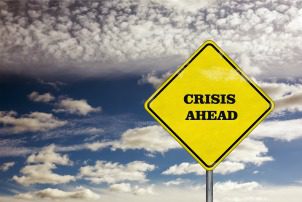 Leaders today are destined for failure.
Leaders today are destined for failure.
That was harsh. The outlook may not be quite so doom and gloom, but research shows us that only a small percentage of people have the inherent skillset needed to be a leader. Despite this, we often watch people move into leadership functions due to tenure, domain expertise or simply, there’s a vacancy — without any leadership qualities. As a result, people begin a leadership role ill-equipped to succeed or to effectively support and develop their team, much less collaborate and contribute across the organization.
Leadership doesn’t just come naturally. There are brilliant scientists, visionary developers and accomplished educators — all highly skilled and educated professionals — who lack the skills to lead a coaching conversation or to collaborate cross-functionally on business strategy. Multiply this deficiency across every function in your organization, and imagine the impact these skills gaps are having on revenue attainment, customer satisfaction and employee engagement and retention.
When you step back, it is rather startling, right? But, is it really the leaders who are failing — or, are organizations failing leaders? Advancing leadership development strategy presents a huge opportunity for learning leaders to deepen their impact on an organization’s overall performance.
We recognize the impact leaders at all levels have on success. This shines a spotlight on the need to better equip leaders with the tools they need to identify and strengthen their own unique leadership DNA.
Creating a band of homogenous leaders across functions isn’t the answer to closing leadership skills gaps. This leaves distinct weaknesses in strategy and decision-making, and is a key reason we’re seeing a rise in diversity initiatives. Modern leadership programs are beginning to harness what we know about our people, and they’re tailoring development to each individual’s gaps, job role requirements and team demands. This begs the question: Where do you start when creating a next-generation leadership growth strategy that builds cross-functional strength and consistency and fosters individuality?
- Empower people to play an active role in identifying and resolving their own distinct gaps. For employees to be engaged in development, they need to play an active role in defining and prioritizing what’s most relevant for them. An effective leadership skillset can’t be defined in a singular way across functions. Instead, equip each individual to understand and grow their own leadership DNA. Today’s technology platforms make this possible without encumbering managers or learning teams by equipping employees with the visibility and accessibility they need to create an individualized path for growth.
- Leverage leaders’ natural curiosity. Employees typically dedicate a small percentage of time to development, which is not exactly the fast-track to becoming a competent leader. The good news is leaders tend to be naturally curious — and learning leaders can harness this. Deliver multimodal opportunities to learn that are easy to consume like videos, books, guides, virtual courses, continuous feedback and coaching. Or, recommend relevant and personalized content throughout an employee’s day to support development that suits each individual’s work style and preferences. Leaders also love to learn from other leaders. So, enable access to trusted, curated collections that virtually bring executive expertise and thought leaders to employees in a more consultative approach to leadership development.
- Push people out of their comfort zone. Most of us think we can learn best from others in our job function, but this isn’t as applicable when it comes to building leadership competencies across the organization. In that scenario, creating an army of like-minded clones can be dangerous. Encourage leaders to lean into other roles for discussion, feedback — even coaching or advice — to bring a variety of perspectives to their growth. Today’s social communities and continuous feedback mechanisms make this easier and more visible than ever before.















